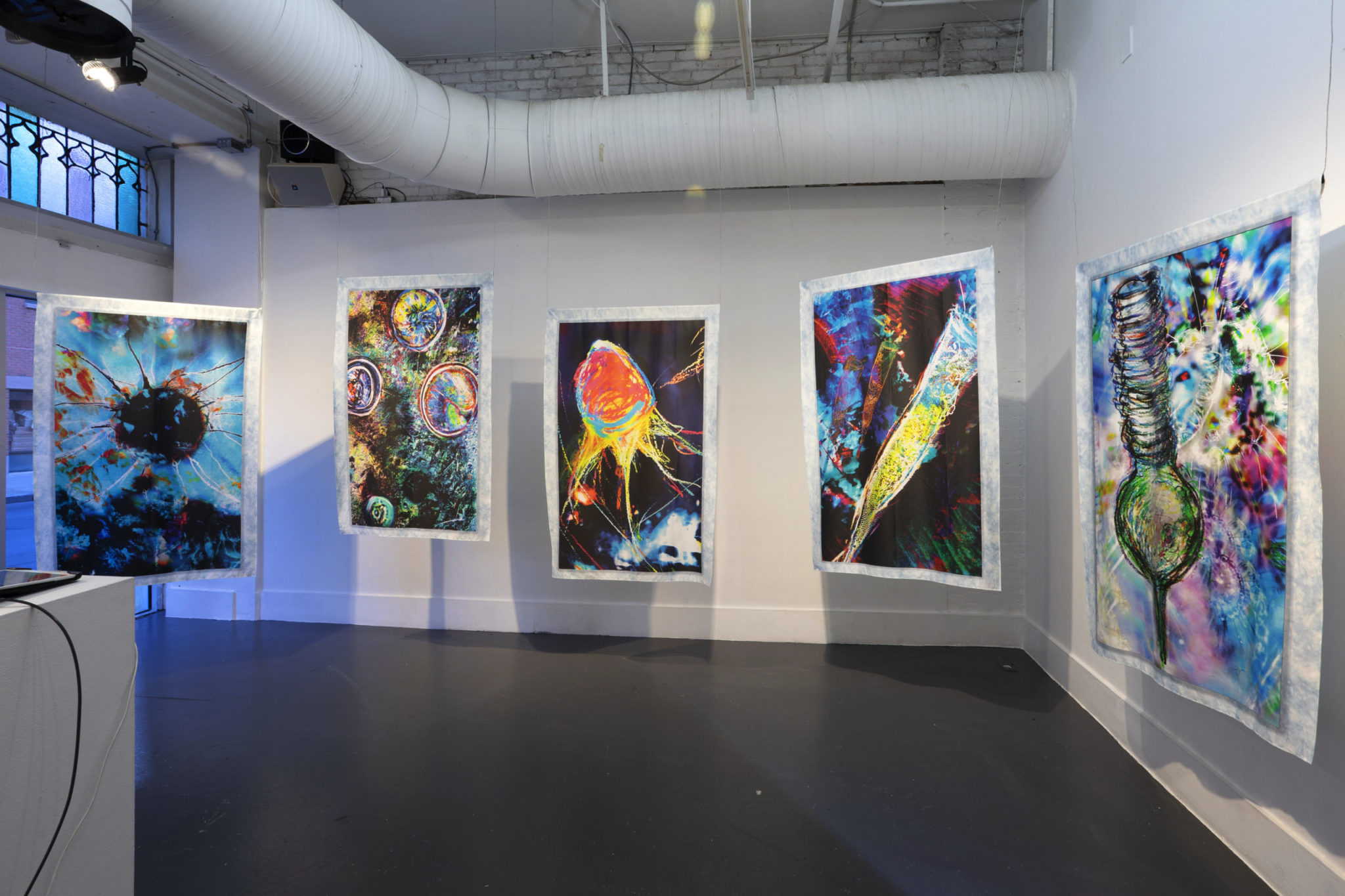
ArtSpaceNewHaven
“Plankton may not have feelings, but we should have feelings for them,” new media artist Cynthia Beth Rubin told the News. In a new exhibition at Artspace New Haven, Rubin dedicates her show to plankton, highlighting their importance in our ecosystem.
Rubin’s series, on display in Artspace’s Project Room, features five large-scale depictions of microscopic plankton printed on fabric. The exhibition will be on view until Feb. 29.
“I think what is interesting to me is that [Rubin’s] addressing a trope a lot of artists are interested in right now — how do you visualize the invisible?” Sarah Fritchey, who is the Curator and Gallery director at Artspace, asked. “Plankton are part of the greater cycle that sustains us, yet they’re invisible to the human eye, and invisible to us, because we don’t talk about plankton in the everyday.”
Fritchey said she learned of Rubin’s work when Rubin participated in Artspace’s Flatfile program. Flatfile is just what is sounds like: a filing cabinet at Artspace containing 2D art submitted by local, regional and national artists. Visitors are allowed to peruse the cabinet with employee assistance, as long as they don a pair of white gloves. These portfolios often lead to fully fledged exhibitions on Artspace’s walls.
Fritchey said this exhibition is emblematic of what can happen when an artist partakes in a scholarly space outside their field. She added that Rubin’s depiction of plankton is “less a formal object of study, and more along the lines of an acquaintance.”
Rubin collaborated on this project with oceanographers from the Menden-Deuer Plankton Ecology Lab in the Graduate School of Oceanography at the University of Rhode Island. The oceanographers provided raw data of plankton collected from oceans in the North Atlantic, Antarctica, the Pacific Northwest and Narragansett Bay.
Rubin began working with these oceanographers while teaching a studio class at Rhode Island School of Design. She took her students to the RISD Nature Lab, where she was encouraged to explore plankton. When Rubin eventually stopped teaching, the School of Oceanography asked her to stay as an artist-in-residence.
Rubin said the images of plankton developed from the oceanographers’ microscopes were “low-resolution” and “usually grey.” As artist-in-residence, she was asked by the lab’s lead scientist Susanne Menden-Deuer to do something with them. Rubin, who is digitally proficient, said the images were too tiny to “blow up.” This led her to pick up a piece of paper and create her first plankton drawing.
As a new media artist, Rubin frequently experiments with augmented reality and interactive experiences. She has explored the integration of new media art with old media mediums like drawing and printing for over 40 years. Fritchey described Rubin as a “pioneering artist” in new media, and “groundbreaking” in the way she combines the two kinds of media. In this show, visitors can experience augmented reality through an iPad, where they can view drawings of plankton in an ocean mural. The plankton were drawn by participants of two open Plankton Drawing Workshops Rubin conducted last fall.
Fritchey noted that “forcing you to look for something you can’t see” replicates the experience of the oceanographers when they look for plankton in different bodies of water.
Bruce Wands, Emeritus professor at the School of Visual Arts and author of “Art of the Digital Age,” has known Rubin’s creative work for close to 20 years. “As an artist, she constantly pushes the boundaries of digital art and is well-known in the field for the innovative approaches she uses when exploring her subject matter,” he said.
Wands added that the strengths in her recent work on microscopic plankton rely on her painting background and underlying curiosity in incorporating new media into her creative process.
“I am really interested in making connections between ideas, and one of my goals is to have people connect in some way,” Rubin said. “I want people to have a visceral connection, and really distill and feel the energy of the plankton.”
Artspace New Haven is open Wednesdays through Saturdays from 4–6 p.m.
Freya Savla | freya.savla@yale.edu







